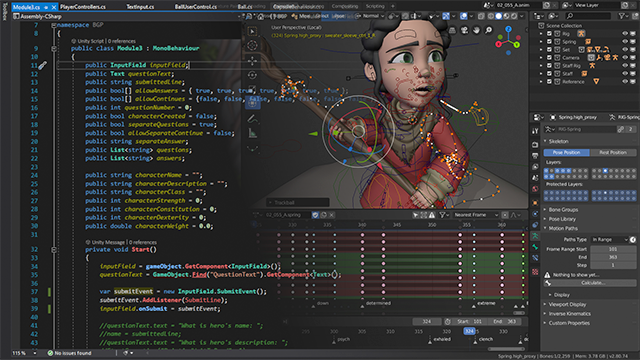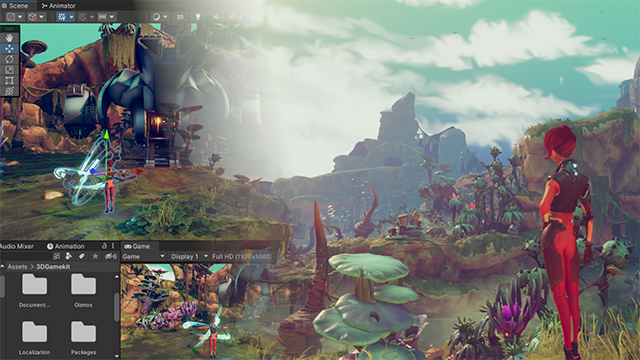“The Playful Kraken” – Part 2: The Actual Questions

I have gathered many Game Industry areas and sectors that I have been involved with during my career, using a mind map tool (see Game Industry Structure). As (video) Game Industry is the one involved in the development, marketing, and monetization of (video) games, the mind map also reflects the difficulty of defining the whole concept of Game Industry; there are so many areas of other industries that also fall under the extended meaning of the Game Industry. The latest “addition” to these areas is Metaverse (2022) that the largest Tech companies on the planet are currently taking interest in.
Game development, being the most prominent field of the Game Industry (Video game industry, 2022), has been described in another mind map of mine (see Game/Project/Company Structure). It contains the game, game development or production project / group, and game company structures. This division provides the possibility for comparison to the Chips for Game Skills (Heinonen, 2020) and the map of competence-based open badges for the gaming industry published in Kumu (Pelimerkit, 2020). The mind maps and the Chips are a good starting point for discovering the variety of search terms used for finding Game Industry related education around the world.

Finnish education system provides a wide selection of possibilities which Voima (2019) describes in his presentation at Tracon 2019 Friday Games Fest. He has also tried to answer the question “Why study game development?” in education institutions. The answers are interesting, varying from learning the required skills and finding like-minded people, continuing through attaining academic software licenses and finding the excuse to attend gamedev events, all the way to student discounts and setting deadlines to finish things. Even more interesting is the fact that all the available Game Industry education seems to almost purely consist of game development education with the pinch of business / publication / IT or other studies on the side. This is conflicting, since according to the national education guidelines set by the Ministry of Education and Culture (n.d.) digital games are included in the audiovisual culture. Even KEHA-keskus (n.d.), the development and administration center of both Finland’s Centre for Economic Development, Transport, and the Environment (ELY-keskus) and the Employment Services (TE-palvelut) are struggling to provide services to Game Industry companies as well as the future employees. There are no fitting categories for game development or other Game Industry areas, so it is left to the company and the job seeker to find each other, mostly on other platforms or websites.

At the same time, the available education around the world (in-class, virtual and online) constantly increases its quality and competitiveness. Many schools provide courses or even full curriculums online and the amount of available free tutorials keeps growing because of efficient and popular distribution channels like YouTube, Udemy, Zenva Academy, and even the game engine developers’ own learning portals. These curriculums and learning materials are usually far away from the quality provided by professionally created digital courses available in different portals like Udemy, SkillShare, GameDev.tv, and other education providers, many of which I have listed in another mind map (see Global Game Industry Education). This leaves some open questions, like:
- What can education institutions do to make themselves stand out?
- What do the students want and what do they need?
- Where to get the funding for making higher quality Game Industry seniors?
All the questions are interesting in themselves per se, but the Game Industry of Finland Report 2020 (Team Neogames, 2020) makes a good point reminding that the point of the education provided is to prepare a new generation of skilled people, who will make the Game Industry take the next step forward.
Writer

Risto Koskenkorva (Certified Professional Teacher (JAMK), M.Sc – IT (JYU), Game Industry Veteran) works as a senior lecturer in Jamk BIT Game Production. Specialized in Game Industry (Game Development, Game Production, Game Programming, Game Engines, 3D Art & Animation, Game Publishing, Game Entrepreneurship, and Leadership & Management).
References
Heinonen, S. (2020, June 18). IDENTIFYING COMPETENCE WITH DIGITAL BADGES — GAME INDUSTRY COMPETENCE TARGET MAP. https://pelimerkit.metropolia.fi/en/2020/06/18/identifying-competence-with-digital-badges-game-industry-competence-target-map/
KEHA-keskus. (n.d.). Job Market Finland [Website: Meeting place for people and jobs]. Retrieved June 2, 2022, from https://tyomarkkinatori.fi/en
Metaverse. (2022, June 2). In Wikipedia. https://en.wikipedia.org/w/index.php?title=Metaverse&oldid=1091000745
Ministry of Education and Culture, Finland. (n.d.). Audiovisual culture in Finland. Retrieved June 2, 2022, from https://okm.fi/en/audiovisual-culture
Pelimerkit. (2020, June 30). Gamebadges [kumu.io based map of competence-based open badges for the gaming industry]. Retrieved June 2, 2022, from https://kumu.io/-/209159#map-WoYEQUtu
Team Neogames. (2021, June 8). Finnish Game Industry Report 2020 [A report created by Neogames in collaboration with the Finnish Game Developer Studios Assn., Business Finland, City of Helsinki, and interviewed game studios]. Retrieved May 27, 2022, from https://neogames.fi/category/publications/
Video game industry. (2022, May 31). In Wikipedia. https://en.wikipedia.org/w/index.php?title=Video_game_industry&oldid=1090783816
Voima, M. (2019, September 6). How to Study Game Development in Finland [SlideShare based presentation for Tracon 2019 Friday Games Fest event Opening presentation]. https://www.slideshare.net/MikkoVoima/how-to-study-game-development-in-finland
Read the other parts of ”The Playful Kraken” series: